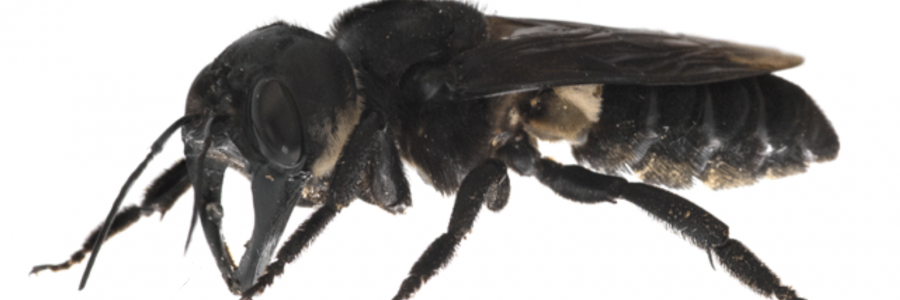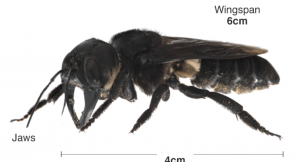
World’s biggest bee re-discovered

The world’s biggest giant bee, which is as long as an adult’s thumb was found on North Moluccas, a little-explored Indonesian island. Known as Wallace’s giant bee, the insect is named after the British naturalist and explorer Alfred Russel Wallace, who described it in 1858. Although scientists found several specimens in 1981, it has not been seen since. In January 2019, a team followed in Wallace’s footsteps on a journey through Indonesia in an attempt to find and photograph the bee.
Megachile Pluto with an estimated wingspan of two-and-half inches (6cm), the female makes nest in termite mounds, using her large jaw to collect sticky tree resin to line the nest and protect it from invading termites. Wallace, who co-developed the theory of evolution with Charles Darwin, described the bee as “a large black wasp-like inspect with immense jaws like a stag-beetle”.
Eli Wyman, an entomologist at Princeton University said he hope the rediscovery would spark future research towards a deeper understanding of the life of the bee and inform any future efforts to protect it from extinction.
Global Wildlife Conservation (GWC), an environmental group which has launched a worldwide hunt for lost species sponsored and supported the trip.
Robert Moore said “By making the bee a world-famous flagship for conservation, we are confident that the species has a brighter future than if we just let it quietly be collected into oblivion”.
